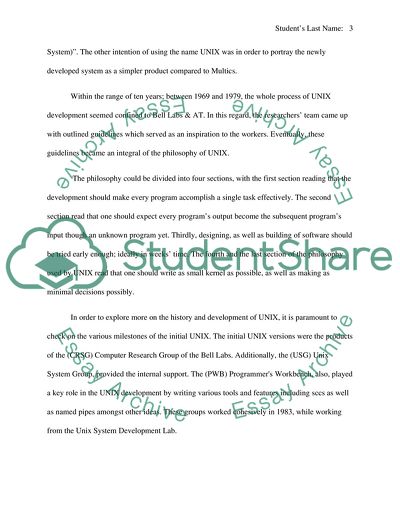Cite this document
(Development and History of Unix and Linux Coursework Example | Topics and Well Written Essays - 1750 words, n.d.)
Development and History of Unix and Linux Coursework Example | Topics and Well Written Essays - 1750 words. https://studentshare.org/information-technology/1772675-development-and-history-of-unixlinux
Development and History of Unix and Linux Coursework Example | Topics and Well Written Essays - 1750 words. https://studentshare.org/information-technology/1772675-development-and-history-of-unixlinux
(Development and History of Unix and Linux Coursework Example | Topics and Well Written Essays - 1750 Words)
Development and History of Unix and Linux Coursework Example | Topics and Well Written Essays - 1750 Words. https://studentshare.org/information-technology/1772675-development-and-history-of-unixlinux.
Development and History of Unix and Linux Coursework Example | Topics and Well Written Essays - 1750 Words. https://studentshare.org/information-technology/1772675-development-and-history-of-unixlinux.
“Development and History of Unix and Linux Coursework Example | Topics and Well Written Essays - 1750 Words”. https://studentshare.org/information-technology/1772675-development-and-history-of-unixlinux.


